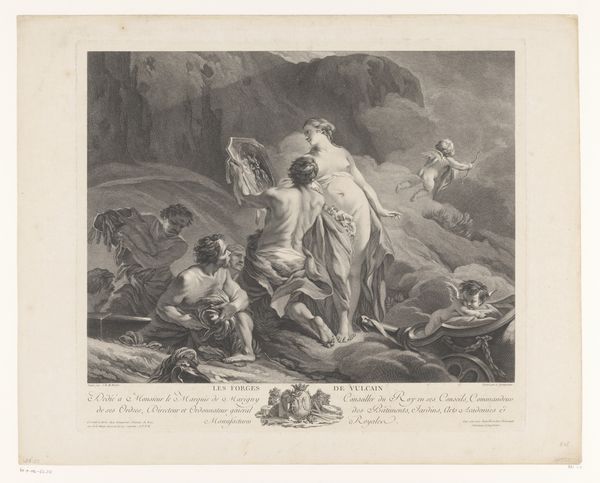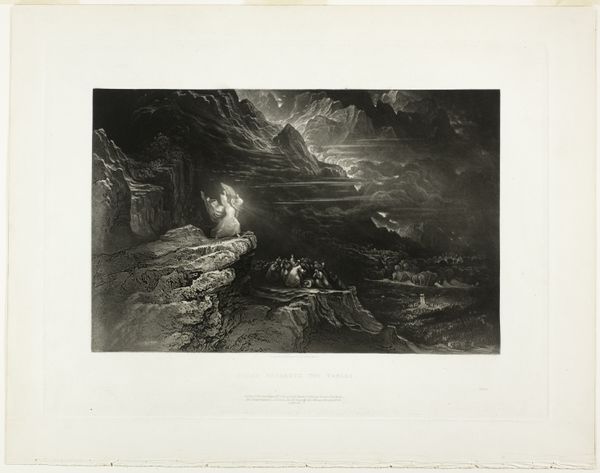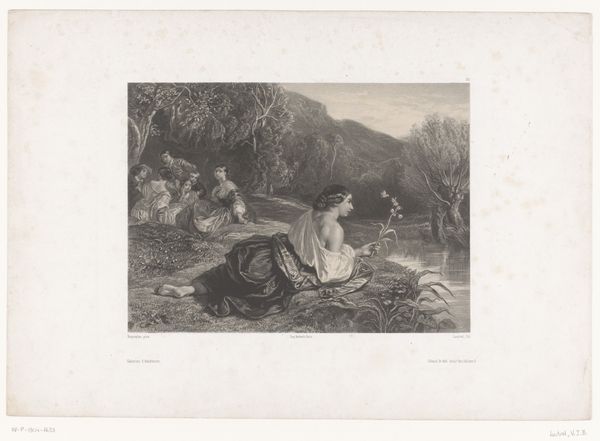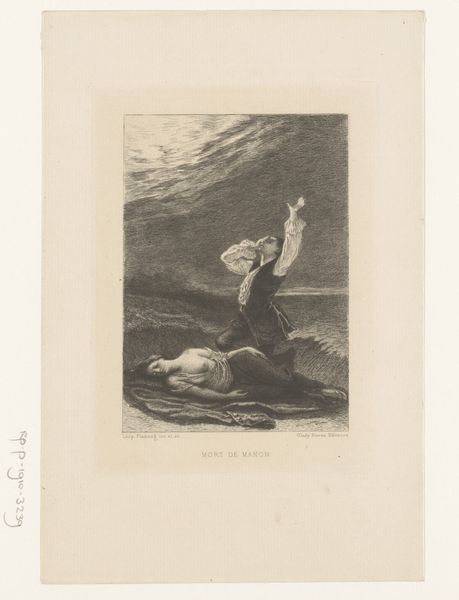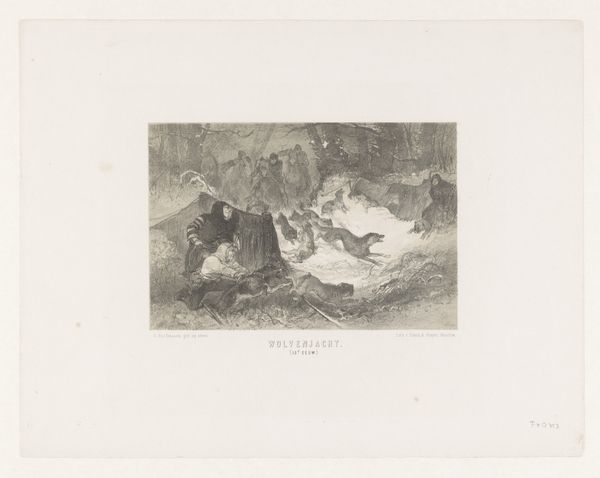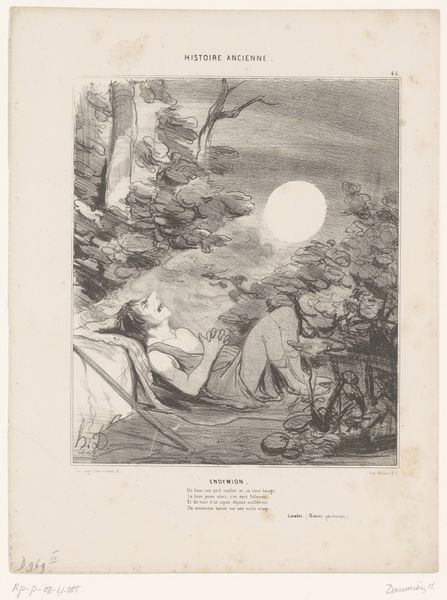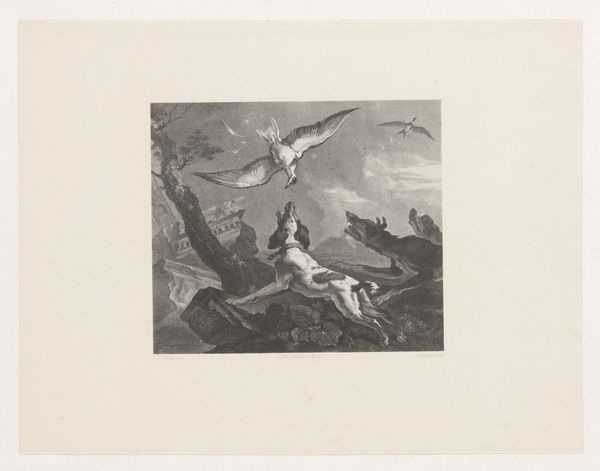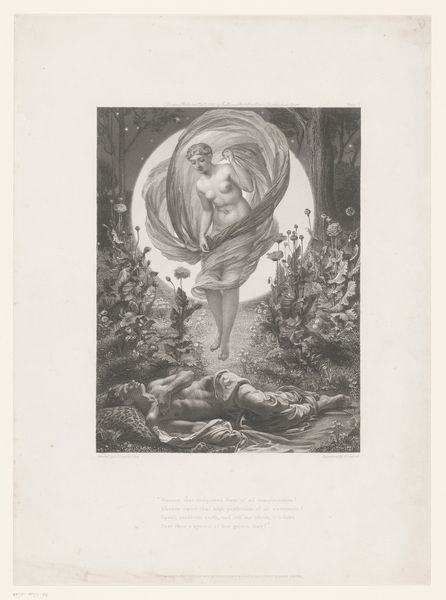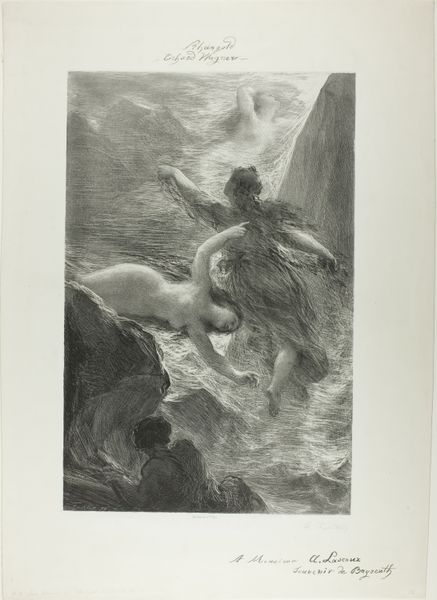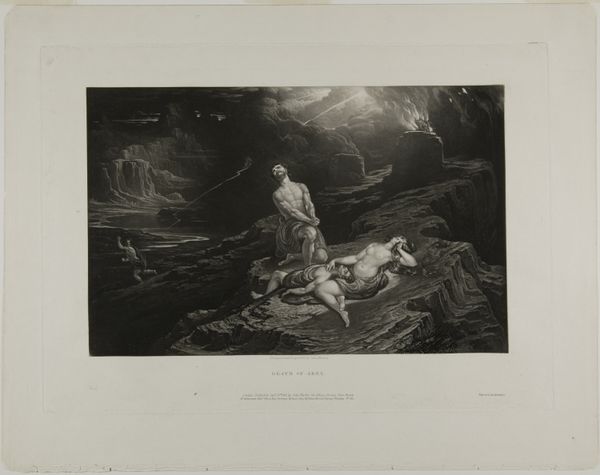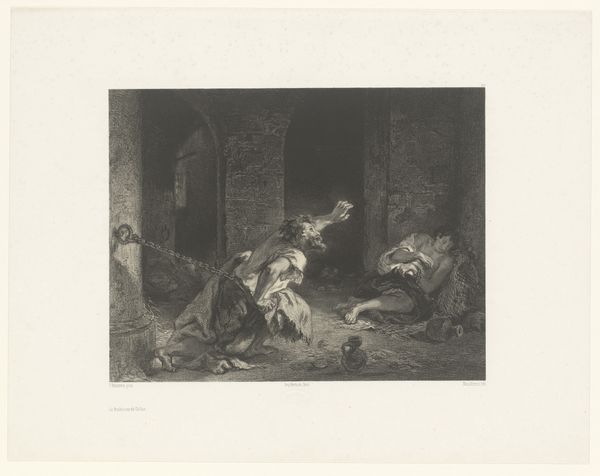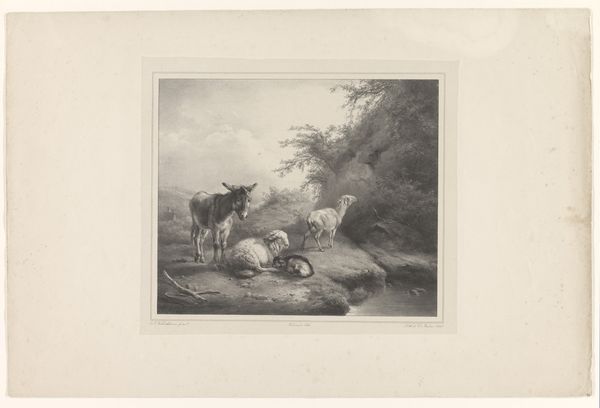
print, engraving
#
allegory
#
narrative-art
# print
#
romanticism
#
history-painting
#
engraving
Dimensions: height 270 mm, width 336 mm
Copyright: Rijks Museum: Open Domain
Editor: This engraving by A. Casati, titled "Lodewijk Filips I als moordenaar van de vrijheid," which translates to "Louis-Philippe I as murderer of freedom" from 1834, feels overtly critical. There's so much theatrical drama packed into a single scene. What do you see in this piece that helps unpack its historical moment? Curator: It’s crucial to understand that prints like these served a vital role in shaping public opinion in 19th-century France. They were easily disseminated, making them powerful tools for political commentary. The “July Monarchy” under Louis-Philippe, initially welcomed as a more liberal alternative, gradually disappointed republicans and those yearning for greater democracy. Notice the figure fleeing the scene, seemingly trying to escape divine judgement. Who might that represent? Editor: Well, given the title, it's probably Louis-Philippe himself, right? He seems to be running away from a figure that maybe embodies liberty, since there is another woman on the ground that appears to be dying. Curator: Precisely. This caricature positions him as a betrayer of liberty. By referencing prudhon, Casati uses art history to critique contemporary politics, reminding viewers of art's power to comment on political realities. What kind of impact do you think images like this one had at the time? Editor: It's fascinating how artists used allegory to circumvent censorship and voice political discontent! With affordable prints like this, political critique becomes accessible to many rather than a privilege reserved for the elites. Curator: Exactly. It also prompts us to consider the broader impact of visual culture on political discourse and social change. Analyzing this artwork emphasizes the essential role played by prints within artistic mediums to influence contemporary issues. Editor: Thanks, looking at it in that context changes my perspective entirely. I can see how images really can become tools to influence opinion.
Comments
No comments
Be the first to comment and join the conversation on the ultimate creative platform.
